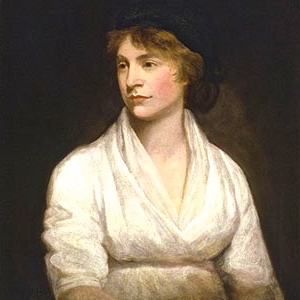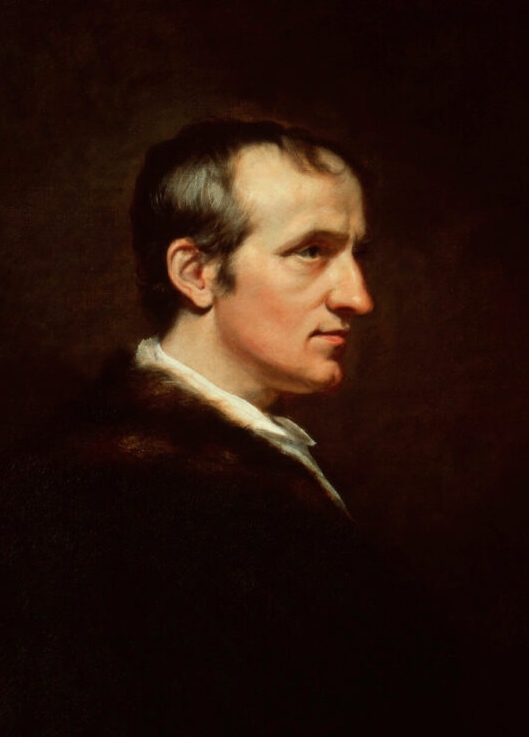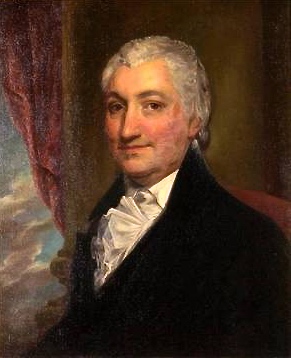“My own story is [not pretty], far from it. There are triumphs in it, a scattering of joys, but the beautiful sits side by side with the grotesque; I cannot separate them. All the brutality is there, the hurt I’ve suffered at the hands of others, but so, too, my own mistakes, missteps, and missed understandings. I have held it close, afraid to unleash it into the world.” – Mary Wollstonecraft, August, 1797.
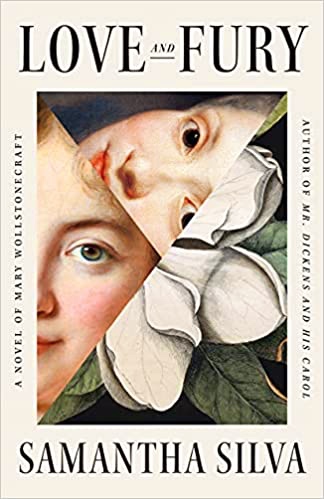 Though Mary Wollstonecraft (1759 – 1797) may have been afraid to “unleash her story into the world,” that story, however incomplete it may have seemed to the general public in her own time, has now been recreated in insightful detail by author Samantha Silva. Using known facts and details provided by Mary Wollstonecraft’s husband, William Godwin, following Wollstonecraft’s death in 1797, at age thirty-eight, Silva creates an intense and vibrant fictional biography of a woman many generations ahead of her time. The feminist ideals she exemplifies in her life, which shocked the women of her own time, include her years-long relationship with a woman friend and her desire to set up a “female utopia” with her; her establishment with others of a school for young women under the banner of being “dissenters” from the Church of England; her flagrant affairs with two well-known writer-philosophers; her stay in France and support of the French Revolution; and her much-loved child from her out-of-wedlock relationship with Gilbert Imlay. She made these and other seemingly radical choices alone at a time in which most women were completely subservient to men, the church, and the government in power. The publication of her A Vindication of the Rights of Woman (1792), considered “one of the trailblazing works of feminism,” added to her reputation as one of the early founders of feminist philosophy, a philosophy she lived throughout her life.
Though Mary Wollstonecraft (1759 – 1797) may have been afraid to “unleash her story into the world,” that story, however incomplete it may have seemed to the general public in her own time, has now been recreated in insightful detail by author Samantha Silva. Using known facts and details provided by Mary Wollstonecraft’s husband, William Godwin, following Wollstonecraft’s death in 1797, at age thirty-eight, Silva creates an intense and vibrant fictional biography of a woman many generations ahead of her time. The feminist ideals she exemplifies in her life, which shocked the women of her own time, include her years-long relationship with a woman friend and her desire to set up a “female utopia” with her; her establishment with others of a school for young women under the banner of being “dissenters” from the Church of England; her flagrant affairs with two well-known writer-philosophers; her stay in France and support of the French Revolution; and her much-loved child from her out-of-wedlock relationship with Gilbert Imlay. She made these and other seemingly radical choices alone at a time in which most women were completely subservient to men, the church, and the government in power. The publication of her A Vindication of the Rights of Woman (1792), considered “one of the trailblazing works of feminism,” added to her reputation as one of the early founders of feminist philosophy, a philosophy she lived throughout her life.
In author Samantha Silva’s hands, Mary’s story becomes completely human, with two narratives conveying her life stories from two different times and perspectives. The first narrative, told primarily by Mrs Blenkinsop, a midwife, opens on August 30, 1797, as Mary, then thirty-eight, is about to give birth to her second child, a daughter by her husband, the novelist and philosopher William Godwin. Her labor has been long and slow, and Mrs. Blenkinsop has suggested that she tell the unborn child the story of her life, believing that Mary might be able to “talk [the baby] into the world.” The birth comes, with difficulty, but there are serious complications. Mrs. B remains loyal, helping Mary as she continues to tell her story for the next eleven days, during which Mary struggles with fever and infection. Husband William Godwin loves her and is sweetly attentive, and his revelations of their relationship show the depth and honesty of their feelings for each other, despite the past.
Mary’s own narrative, “told for the baby,” begins with the story of her childhood in which she becomes infatuated with Jane Arden, a fifteen-year-old schoolgirl whose life is more elegant than Mary’s, and Mary is “determined to overcome any obstacle to possess her friendship.” Jane’s father, a scientist, also becomes a friend, introducing the curious Mary to the magnifying glass, and even giving one to her. As for her own family, she resents her often drunk father’s heartless treatment of her mother, his brutal treatment of her handicapped brother, and his heartlessness toward her, which is so obvious that she believes she “ought to have said to him: “Look at you. You’re less than nothing. That’s why you hurt everyone else.” It is through Jane that Mary is first able to formulate arguments against the role of women as dependents of men, even as she is still anxious to attend a formal dance at which Jane openly admits she will be looking for a potential husband.
A series of family moves to new places in England, Mary’s ten year relationship with Fanny Blood, and her decision with Fanny to start a school continue to illustrate the differences between women and men in terms of opportunity. It is through Fanny that she ponders the question, “What if our real power – the one we’re born with, which we so rarely assume – lies in altering our sensitivity to the things that aggrieve us. Imagine if we could heal ourselves.” Eventually she goes to Dublin as a governess/teacher, where she does well and enjoys her work, until the lady of the estate discovers a book Mary has been writing in which she privately questions the behavior of that lady and mocks her. Losing her job, she again returns to writing and finds interest from a publisher. That publisher later introduces her to other writers, and some of whom are also philosophers. She challenges Edmund Burke in print, and it is this way that she first meets William Godwin, who disagrees with her opinions. Two passionate love affairs follow, one with Henry Fuseli and one with Gilbert Imlay, who becomes the father of her first child. These experiences help Mary gain further insights into the complexities of love and the difficulties of being true to herself. Her eventual marriage to William Godwin, when she is several months pregnant by him, is the crowning touch of what has been her true awakening as a thoughtful feminist.
Without sacrificing the philosophical underpinnings of Mary Wollstonecraft’s life and legacy, author Samantha Silva recognizes the effects of these same beliefs on other writers and governmental officials during the Romantic Period, while also acknowledging the conflicts that arise both for individuals and societies. Her depiction of Mary’s time in France during the French Revolution, a turning point for Mary, makes the horrors of that time truly real, in contrast to the final chapters of Mary’s story which emphasize her passionate, romantic loves within her dedicated life. Readers who are accustomed to regarding “feminism” as a modern meme will see Mary Wollstonecraft’s feminist beliefs play out within the context of her life two hundred years ago, as these ideas come vibrantly to life among writers, publishers, and political leaders during that time. And when Mary Wollstonecraft’s new baby is named Mary, and becomes, eventually, Mary Shelley, creator of Frankenstein and the wife of Romantic poet Percy Bysshe Shelley, Mary Wollstonecraft’s legacy truly becomes real.
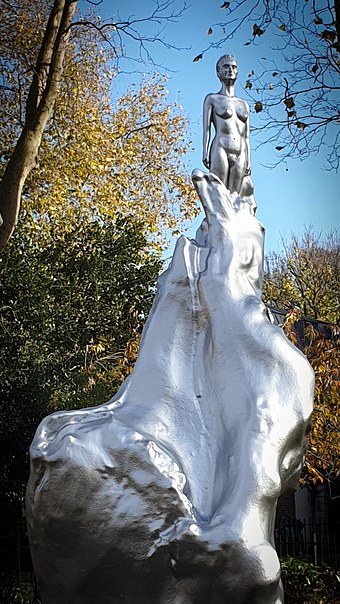
Statue of Mary Wollstonecraft, raised on Newington Green, London, on November 10, 2020. More information available at Wikipedia link.
Note: On November, 10, 2021, a statue honoring Mary Wollstonecraft was unveiled in London. It faced immediate criticism with the nude figure regarded as insulting to Mary and her beliefs. Some supporters are working to replace it, though the sculptor, Maggi Hambling, insists that the nude is a “sculpture of an idea.”
Photos. The portrait of Mary Wollstonecraft appears on https://constitutionallawreporter.com
The portrait of William Godwin, Mary’s husband, is from https://wordsworth.org.uk
Gilbert Imlay, with whom Mary had a life-changing affair, is shown here: https://www.geni.com
The author’s photo may be found on https://www.chicagotribune.com
The controversial statue of Mary Wollstonecraft by Maggi Hambling, erected on Newington Green, London, November 10, 2020. More information on this Wikepedia link: https://en.wikipedia.org
